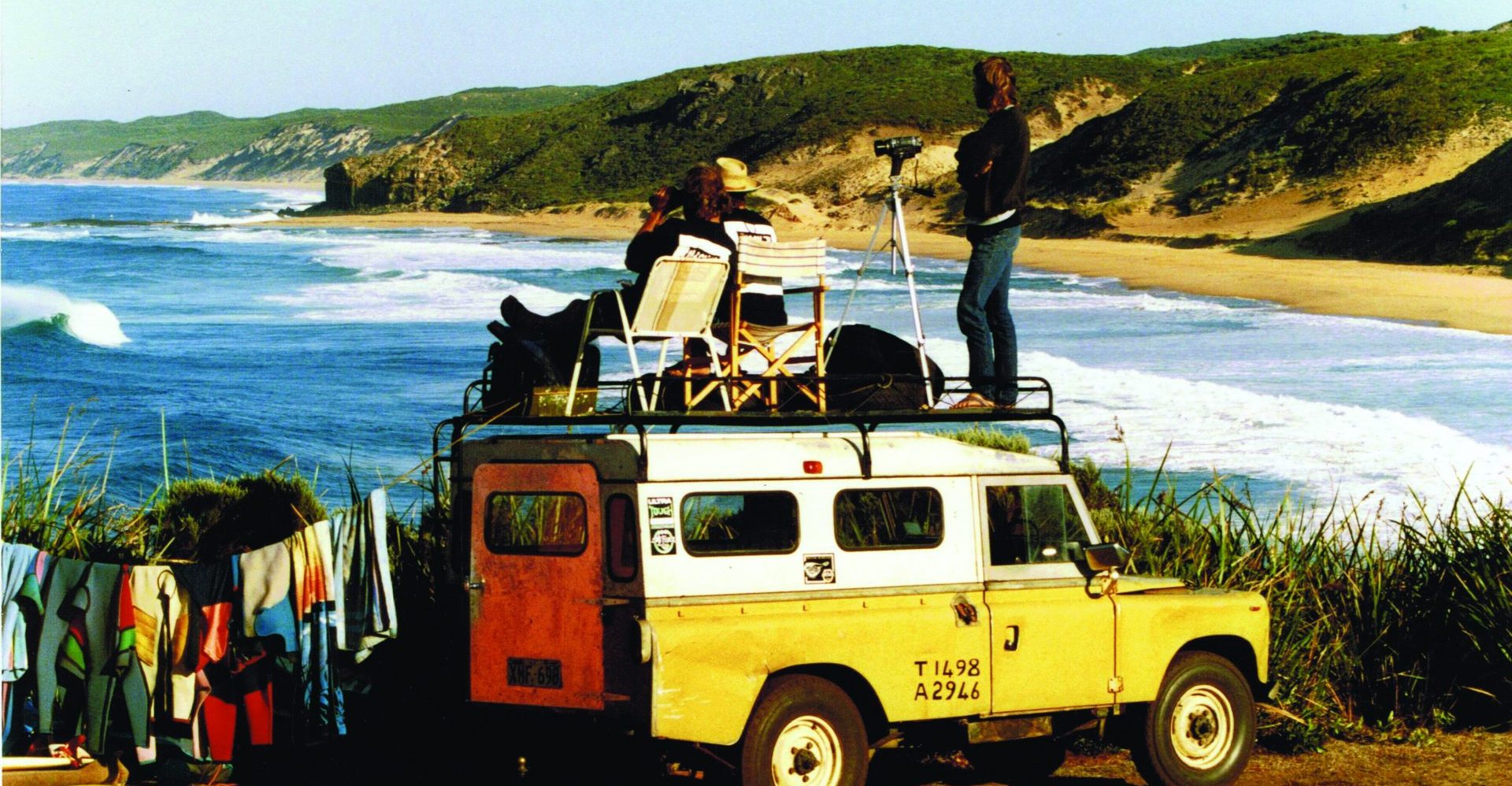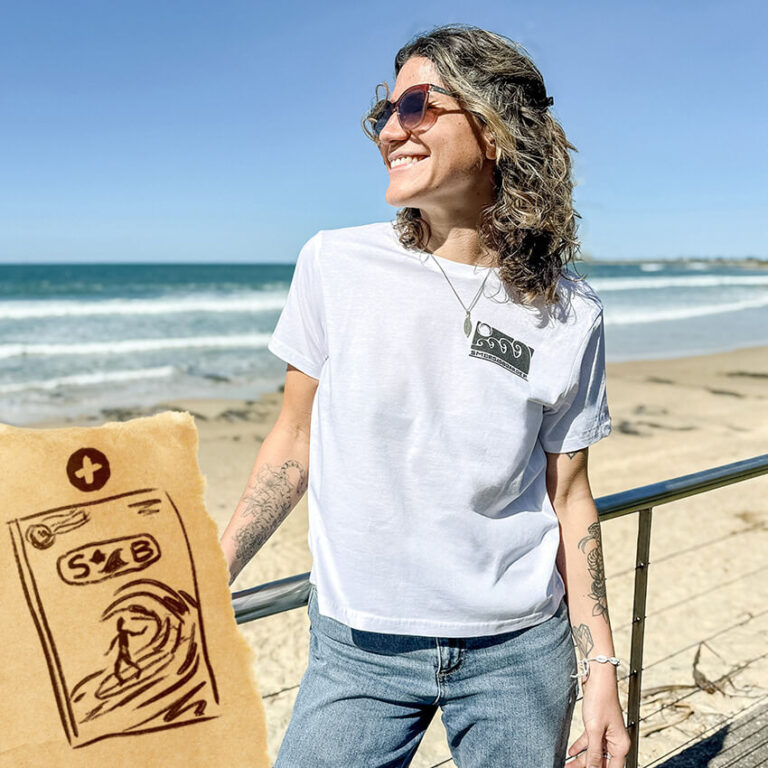In what is a seemingly unlikely location, some 50km outside of Denmark on the South Coast of Western Australia is the largest publicly displayed private collection of historic and collectable surfboards in Australia.

Wayne Winchester is the man behind this new and exciting venture which opened its doors in early 2022. Wayne has been working on living the dream for half a century, not only shaping, repairing and restoring boards, but most importantly surfing, photographing, filming and amassing a collection of historic boards and memorabilia.
As a young man in the 70s and 80s, Wayne was living in the Perth area when his passion for all things surfing led him towards making boards in his family backyard shed. Over time he shaped under a range of brands including Boom Shankar, Tin Can Surfboards, Salt Fever and Winchester. In the 80s, Wayne and his wife Carol managed to have a team of staff working and shaping boards.

Wayne was absorbed in the surfing lifestyle as a young man, though he is quick to point out that although he loved everything surf-related, including running a board shaping business, he always worked a real job on the side to help supplement his lifestyle. While his shaping business was successful, he soon found a niche in the market offering surfboard repairs.
While most of the surf shops in the Perth area at the time sold boards, very few offered a repair service. Soon after Wayne and his team developed a reputation for delivering quality board repairs, most of the shops in the Perth area were referring to him. Wayne identified that board repair was relatively lucrative as making boards (similar to today) was a very time-consuming and expensive process with often very tight margins.
We will address Wayne’s Surf Gallery and “Evolution of the Surfboard’ exhibition later, but for now we wanted to catch up with him and pick his brain on surfboard restoration and surfboard collecting – both of which are his key passions and has led him to where he is today.
Restoration
Wayne was keen to differentiate between surfboard repair and surfboard restoration.
“Repairs are usually done to everyday riders and are generally just to fix specific areas of damage to keep the board in a surfable condition.
“Restoration involves a much deeper and complex process. The work is generally done to specific vintage surfboards and involves the entire board,” he said.
Approaches to surfboard restoration vary. Some ‘hard’ restoration processes can be quite intensive, as basically all of the fibreglass is removed leaving only the original blank, with the board being built back up using new decals, colours and glass.
On the other end of the spectrum, we have all seen those restoration jobs where an old board receives a paint job on the outside of the glass and a new shiny clear coat to retain only the tapped off logo, shape and rails of the original board. As a collector and surf historian, Wayne takes a more measured and honest approach to his restoration work.
“Restoration demands a different level of respect. It’s about preserving culture and it aligns with my technical, environmental and artistic approach to life,” he said.
Bringing surfboards back from the brink to where they are valued and appreciated is intrinsically rewarding for Wayne. Some of his clients want to surf the boards again, and others want them as display items or even to sell, which is also a factor in how the restoration is approached. While he considers the customers desires, he prefers a ‘softer’ approach to restoration.
Authenticity is key for Wayne, as he likes to keep as much of the original fabric and material of the boards as possible. He focusses on repairing any of the damage and structural issues using minimal impact and the correct materials.
“My involvement in the surfing industry since the late 60s has given me the knowledge to undertake the work in a manner that is sympathetic to the ear that the board was made, using period correct materials and techniques,” he said.
He attempts to source period correct fins and, if required, correct decals and logos. Even maintaining much of the patina, such as the yellowing and marks of a well-used and loved surfboard, is important to him. Wayne of course takes serious efforts to colour match and repair any designs or artworks.
Surfboard condition is typically ranked on a 1 to 10 scale. Wayne notes that while not all boards can be restored back to a high rank, with a good restoration job, all boards can be improved.



Collectability
It’s impossible to explore surfboard restoration without delving into the subject of surfboard collectability and value. Wayne reports that he noticed the collectability and monetary value of old surfboards had become increasingly apparent in the 2000’s. Prior to this, although there were collectors, there wasn’t as broader demand or real appreciation for the importance and historic value of surfboards.

But, given the growth of the wide-spread appeal of surfing, this situation has changed. Wayne talks of the ‘40-year factor’ in collecting which can be seen in a whole range of areas such as music, furniture, fashion or any pop culture objects where items can become highly desirable again. This may be because of trends returning, or people wanting to connect with their past (and some 40 years later they have the means and time to revisit this influential time of their life) or the quality and craftsmanship finally being recognised in a world of mass production.
“You can consider value in terms of monetary terms or emotional terms,” he said.
In terms of general collectable demand and monetary value there are a couple of core considerations: age, condition and providence.
Wayne notes that originally it was the boards of the 50s and 60s that were sought after and had the highest value. This then extended to the single fins of the 70s and now, much to his surprise, the fluorescent thrusters of the 80s. He is not sure how this will translate for the mass-produced, thin banana boards of the nineties but hey, you never know!
The overall condition of the board is also an important factor, whether this be its original condition or restored condition. As discussed, boards are rated on a 1 to 10 scale in terms of condition. The boards that are typically in better condition are more collectable. This is where the quality of the restoration process in terms of enhancing the boards condition plays a big role.
However, providence is the most significant and often unknown factor in terms of making a board financially valuable. Prudence refers to the verified background of the board, including the shaper, the brand, the decals, the artwork, and the people who have ridden it. These all add to the story, history and importance of a board. For the average surfer who has a couple of old boards under the house, this is one of the most difficult areas to determine. Those of us who don’t have an intimate knowledge of surfing history probably don’t pay much attention to the many of these details. Being able to identify the tangible history of the board helps to determine its true value. Searching for clues such as the brand, the shaper and any identifying features can assist with this investigative process. Wayne advised a good starting point is the surfsearch.com.au website.

Photo – Martin potter’s board. Example of Providence – Martin Potters board on the cover of Tracks magazine.
The Surf Gallery ‘Evolution of the Surfboard’
Over his years in the industry, Wayne amassed an impressive collection of rare and collectible boards. When running his shaping and repair factory in Perth, surfers would often trade their old boards for the latest models.
“People didn’t see the value in old single fins, they were seeking to get their hands on the latest thruster,” he said.

Despite not having any plans for the growing collection at the time, he maintained a deep appreciation for the craftsmanship and artwork associated with these boards so he couldn’t help but keep them. Wayne explained that at the time, those boards were not considered collectable, as they weren’t that old. It wasn’t until the early 2000s, when the sport of surfing become a major industry, that people really started to appreciate them for their cultural and historical significance.
Forward some 30 or so years later, Wayne decided it was time display his hidden treasures.
Starting with curating some hugely successful ‘Evolution of the Surfboard’ exhibitions in Albany and Esperance, Wayne received a lot of interest in his collection and the momentum grew.
The logistics involved in transporting and displaying boards in other areas was prohibitive, so Wayne, with the support of his wife Carol, sought and identified a suitable property on the highway at Youngs Siding Co. Previously it was a dairy farm and at the time of purchase in 2020 it hosed a Woodwork Shop.

After significant hard work and refurbishment, this became the permanent location for what is today the largest private collection on public display of surfboards in Australia. The exhibition space and display are of a very high standard and Wayne talks of drawing inspiration from MONA in Tasmania. It is apparent when visiting the venue that Wayne has a focus and attention to detail that is present in all he undertakes.
The surf gallery houses an extensive collection of boards dating back to the origins of surfing through the development of the surfboard up until the current day. It is hard to describe the quality and historical importance of some of these boards but consider some highlights such as an original 1975 Jerry Lopez Lightning Bolt, a 1968 George Greenough Spoon and a 1981 Michael Peterson Winterspoon. But there are so many more, some 80 in total, on show.

There are also a range of historic photos and a curated film on display taken by Wayne and his brother that transport you back in time. The exhibition also includes a brief evolution of the skateboard from the 60s to 80s along with a viewing window into Wayne’s workshop where, if you are lucky, you can see him working his magic.
Since opening, Wayne continues to develop his collection, with people often giving him surfing memorabilia knowing it will be valued and may be given the opportunity to be appreciated by a broader audience.
Alongside the gallery is a coffee shop (for which Carol bakes fresh cakes daily) and a restored dairy shed and meeting place which makes for a great place to chill and reflect on this little gem of a setup. In the near future there will be opportunities for theme related artists to access gallery space so keep an eye out on the website for more information.
Website details:
thesurfgallery.com.au
surfboardresto.com
The Mexican
When talking about value to an individual it is not necessarily about financial worth. Wayne’s favourite and personally most valuable board is ‘The Mexican’. He obtained the board in the 80s and it is the one he feels the most attached too. The board is a short twin fine shaped by Ian Keightly in 1976 (Mt Pleasant WA) and depicts a lonely Mexican riding a donkey across the desert, with perfect unridden barrels in the background. For Wayne, this image captured and continues to conjure up the allure of surfing and travel in the 70s, with a world of unknown waves to be ridden by adventurous surfers.
The story of this board became even more interesting when Wayne was able to locate the artist, Neve Sumner, who airbrushed the image at 16 years of age. Wayne described the moment as being quite emotional when he was able to show the board to Neves some 40 plus years later. The Mexican takes pride of place in the exhibition.










